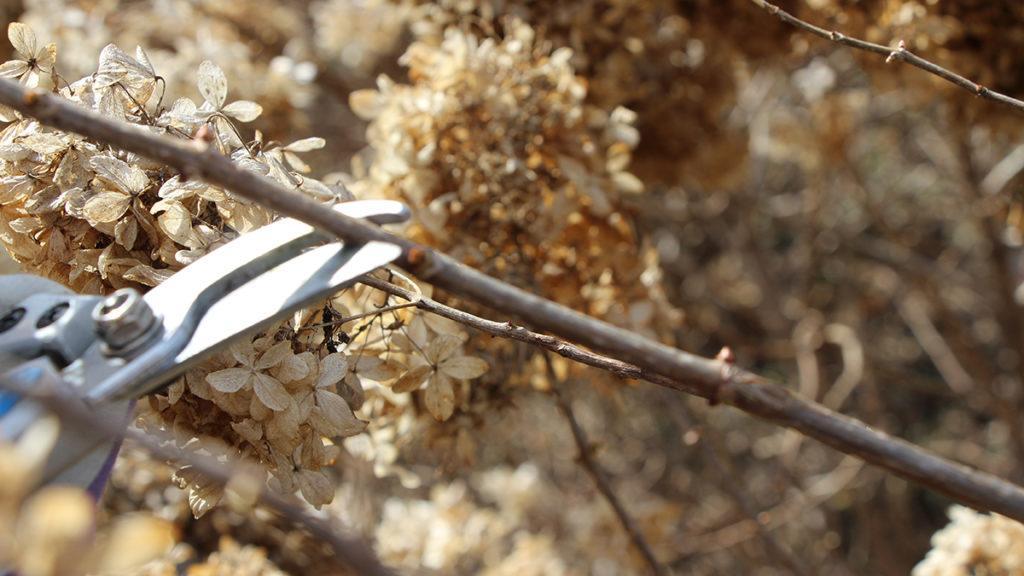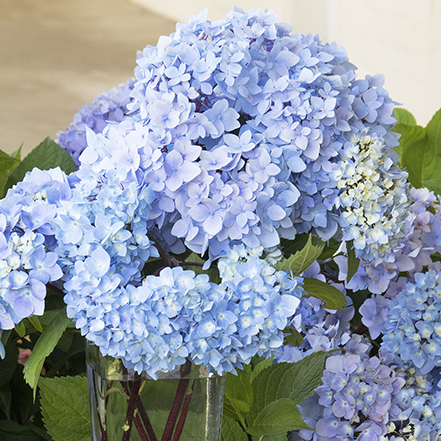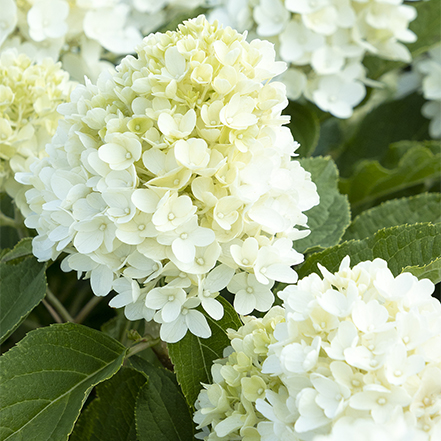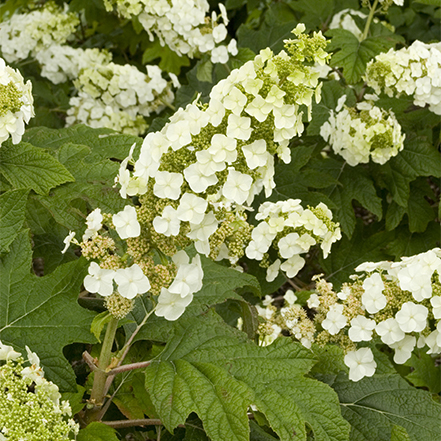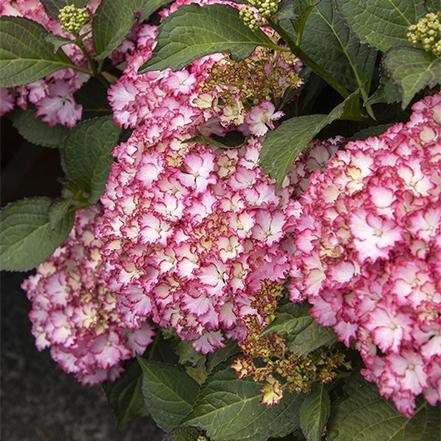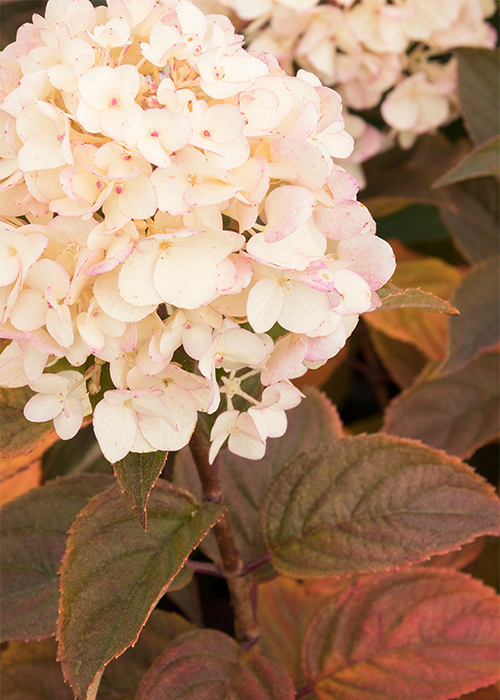Here’s expert advice from guest bloggers Megan Nichols and Jessie Jacobson of Tonkadale Greenhouse. Located in Minnetonka, MN, they discuss the ins and outs of pruning hydrangeas. (Their zip code may just contain more hydrangea trees and shrubs than just about anywhere in the U.S. In other words, they know!)
Pruning hydrangeas is actually quite simple once you know what type of hydrangea is growing in your garden. Common hydrangeas belong to four different species but there are 5 common types, each with slightly different pruning requirements. Before you reach for the pruners, determine which species you’re growing. Browse hydrangeas on Monrovia.com or use the filters on My Plantfinder to get help figuring it out. Once you've determined which type of hydrangea you're dealing with, take a look below. Here you'll find out exactly how and when to prune your hydrangeas.
Need advice on putting your hydrangeas to bed for the winter? We’ve got you covered.
Old Wood vs New Wood
Step one to knowing the best time to prune hydrangeas is determining if they'll bloom on old or new wood. Here’s the definition of each; we break down which is which below. (This is not as horticultural geeky as it sounds, we promise.)
“Old wood” means that buds are formed for next year's bloom at the end of the current growing season. These are formed on stems produced during the previous summer.
• Typically pruned after flowering or early fall to encourage new flower buds on old stems.
“New wood” means stems that have emerged during the current growing season. Buds are formed on this new growth in the current growing season.
• Typically pruned in late winter or in early spring to encourage new stems.
If you get the timing wrong, don’t worry. These are forgiving plants. You may go a season without blooms but, with proper timing, you can expect flowers the following year.
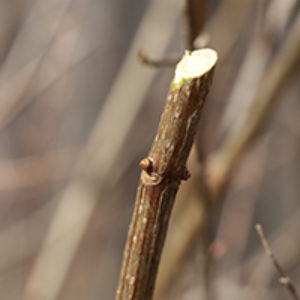
Prune hydrangeas at a 45-degree angle right above a bud. This is usually where a leaf or leaves are attached to the stem.
How and When to Prune Big-Leaf/Mophead/French Hydrangeas (H. macrophylla)
Bloom on old wood: prune in summer or early fall
Remove up to one-third of the total stems each season, starting with the weakest shoots, both old and new ones. Cut these right down to the ground and remove them. What’s left is a combination of old productive wood and strong new stems that will flower next season.
Pictured left: Blue Enchantress® Hydrangea
How and When to Prune Smooth Hydrangeas (H. arborescens)
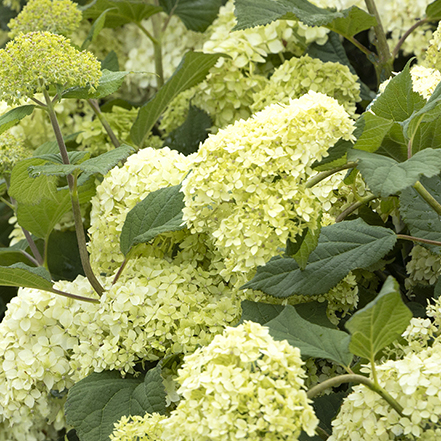
Bloom on new wood: prune in late winter or early spring
Older varieties such as the classic ‘Annabelle’ can become floppy and unruly. Newer varieties like Seaside Serenade® Bar Harbor Hydrangea have been bred to be more compact. Either way, cut back to the ground (don’t be afraid to prune aggressively).
Pictured left: Seaside Serenade® Bar Harbor Hydrangea
How and When to Prune Panicle Hydrangeas (H. paniculata)
Bloom on new wood: prune in late winter or early spring
You may not need to prune panicle hydrangeas every season. If they seem overgrown or floppy, especially after a hard rain, pruning will tune them up. Take off up to 30%-50% of the old growth, before they leaf out, to create a roundish shape.
Pictured left: Candy Apple™ Panicle Hydrangea
How and When to Prune Oakleaf Hydrangea (H. quercifolia)
Bloom on old wood: prune in late summer or early fall after blooming
Oakleaf hydrangeas want to be left alone to do their thing. They require very little pruning; limit to the removal of dead or broken branches as needed. You can improve the shape of the plant by pruning it after it finishes flowering.
Pictured left: Snow Queen Oakleaf Hydrangea
How and When to Prune Reblooming Hydrangeas
Bloom on new and old wood: prune anytime
These bloom on growth from the current year as well as previous years. The "old wood" buds provide early season color. While blooms forming on current season growth flower later, lasting through the end of the season. All they really need is deadheading spent flowers and pruning out dead or weak stems.
Pictured left: Seaside Serenade® Fire Island Reblooming Hydrangea
Hydrangeas in Winter
We love to leave some of the spent blooms on our hydrangeas well into fall and winter. Here they'll sparkle in the frost or add a touch of color to the winter landscape. Other cut flowers are brought inside for pretty winter arrangements.
Pictured left: Candy Apple™ Hydrangea in fall.
More Resources for Caring For and Designing With Hydrangeas
- See where hydrangeas fit into a beautiful landscape design with our free "Simply Beautiful" garden design guide.
- Get help using hydrangeas in your plant color palette with our free "Shade of Beautiful" guide to designing with color.
- Sign up for the Grow Beautifully newsletter for more resources on garden design, plant care, and plant choices.
